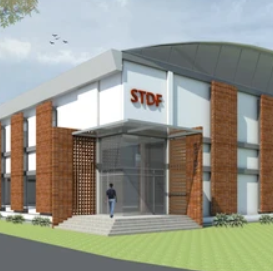Industrial Architecture
Introduction
Industrial architecture refers to the design and construction of buildings and structures used for industrial purposes. This field is characterized by its focus on functionality, durability, and the efficient use of space. From factories and warehouses to power plants and logistics centers, industrial architecture plays a crucial role in supporting industrial activities and economic growth.
Historical Context
The origins of industrial architecture can be traced back to the Industrial Revolution of the 18th and 19th centuries, which marked a significant shift in manufacturing processes and building design. The need for large-scale production facilities led to the development of new architectural forms and construction techniques. Early industrial buildings were characterized by their utilitarian design, often incorporating large, open spaces to accommodate machinery and production lines. The use of iron and steel in construction, as seen in structures like the Crystal Palace in London, revolutionized industrial architecture by allowing for greater flexibility and scale.
Key Characteristics
-
Functionality: The primary focus of industrial architecture is functionality. Buildings are designed to support specific industrial processes, such as manufacturing, storage, or distribution. This often involves the integration of specialized equipment and systems, such as ventilation, lighting, and fire protection.
-
Durability: Industrial buildings must withstand harsh operational conditions and heavy usage. As a result, they are constructed with durable materials such as steel, concrete, and reinforced masonry. These materials provide the structural integrity needed to support large machinery and withstand environmental factors.
-
Flexibility: Industrial architecture often incorporates flexible design elements to accommodate changing needs and technological advancements. This can include modular design, which allows for easy reconfiguration of space, and open floor plans that can be adapted for different types of machinery or production processes.
-
Simplicity: Industrial buildings typically feature a straightforward aesthetic, with a focus on function over form. This is reflected in the use of simple geometric shapes, minimal ornamentation, and exposed structural elements. The design often emphasizes practicality and efficiency rather than decorative elements.
Architectural Elements
-
Structural Systems: Industrial architecture often employs steel or concrete frame systems, which provide the strength and flexibility needed for large, open spaces. The use of trusses and beams helps to support heavy loads and create uninterrupted floor areas.
-
Facades: The exterior design of industrial buildings is usually utilitarian, with large windows or glass panels to provide natural light and ventilation. The use of metal or concrete cladding is common, offering durability and a low-maintenance solution.
-
Roofing: Industrial buildings frequently feature flat or low-pitched roofs, which facilitate the installation of skylights, ventilation systems, and rooftop equipment. In some cases, green roofs or solar panels are incorporated to improve energy efficiency and environmental sustainability.
-
Interior Layout: The interior of industrial buildings is designed to optimize workflow and operational efficiency. This often includes large, open spaces for machinery and production lines, as well as specialized areas for storage, administration, and employee facilities.
Modern Trends
In recent years, industrial architecture has evolved to address new challenges and opportunities. Sustainable design practices have become increasingly important, with a focus on energy efficiency, waste reduction, and environmental impact. The integration of advanced technologies, such as automation and smart building systems, is also transforming the industry. Additionally, there is a growing interest in adaptive reuse, where existing industrial buildings are repurposed for new uses, such as residential or commercial spaces.
Conclusion
Industrial architecture is a dynamic field that combines functionality, durability, and efficiency to support various industrial activities. From its historical roots to contemporary innovations, the design and construction of industrial buildings continue to evolve in response to changing needs and technological advancements. As industries grow and adapt, industrial architecture will play a crucial role in shaping the future of manufacturing, logistics, and beyond.
